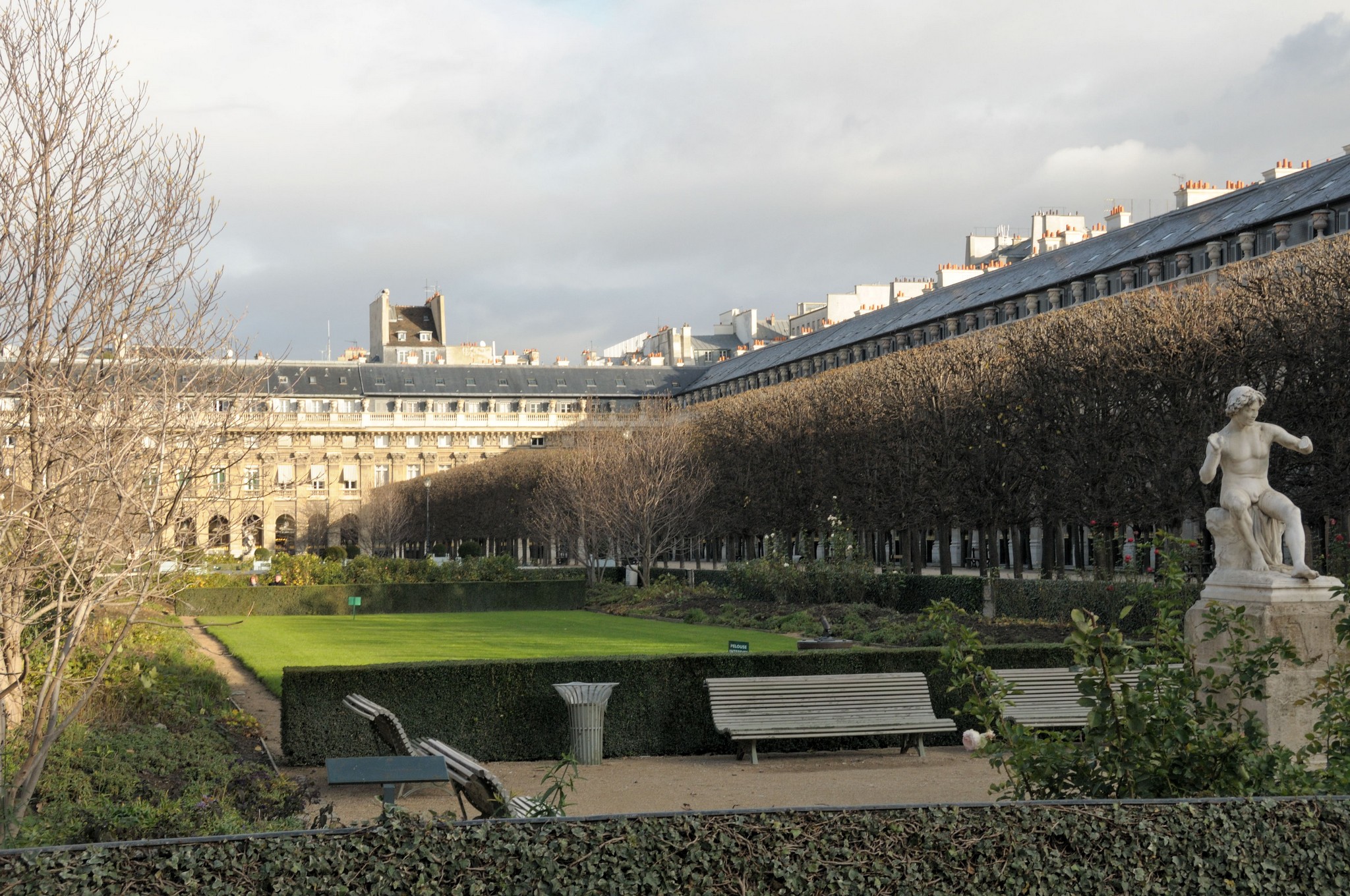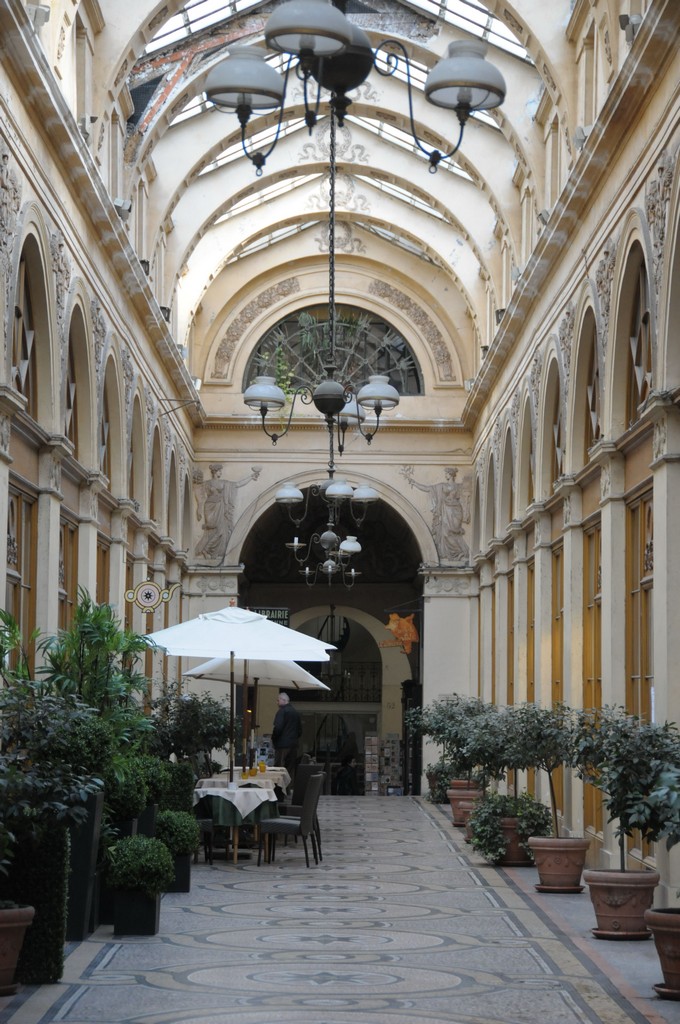
The Galerie Véro-Dodat
© Antonio Ca' Zorzi (2011)
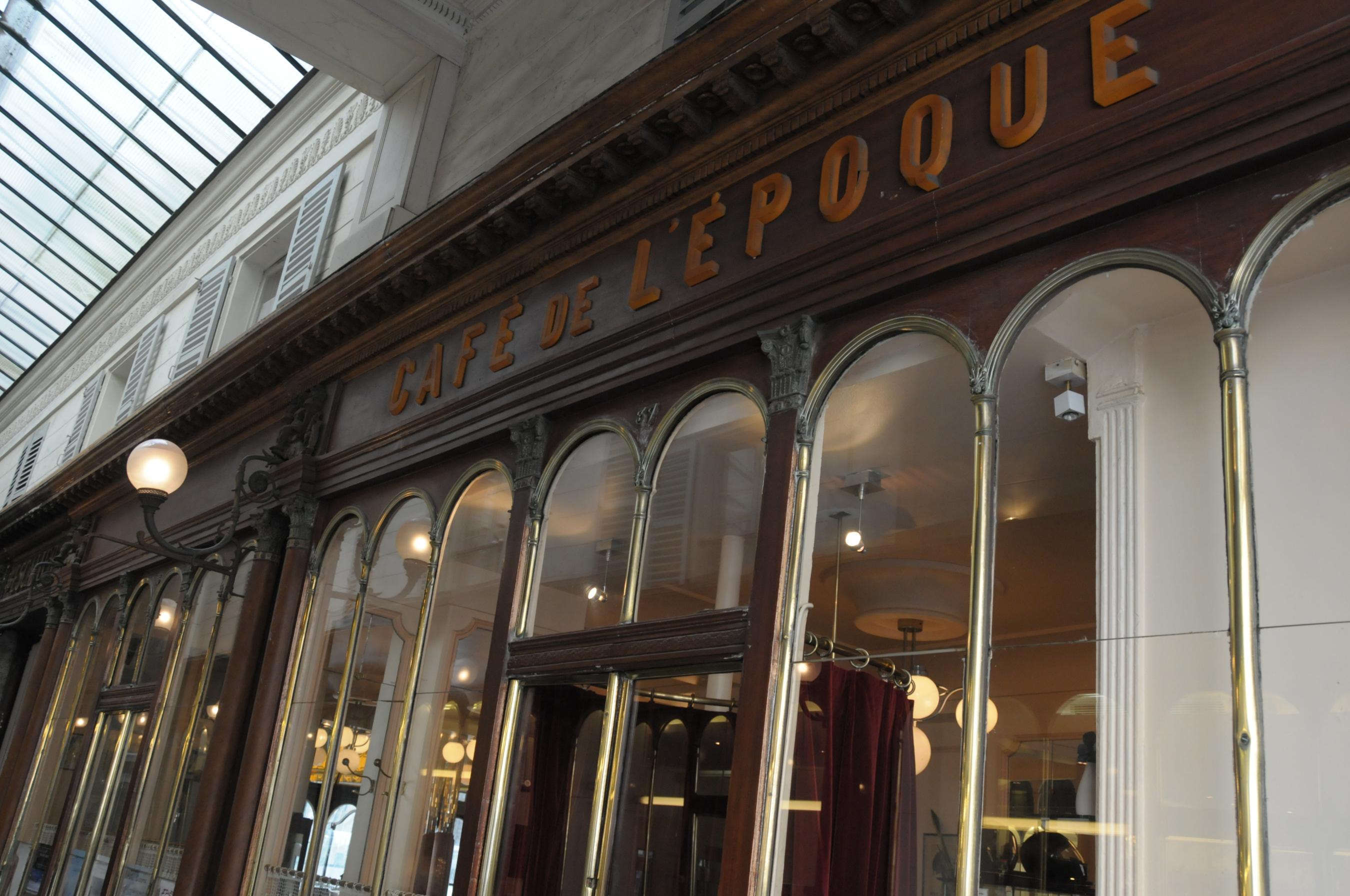
Detail of the Café de l'Époque
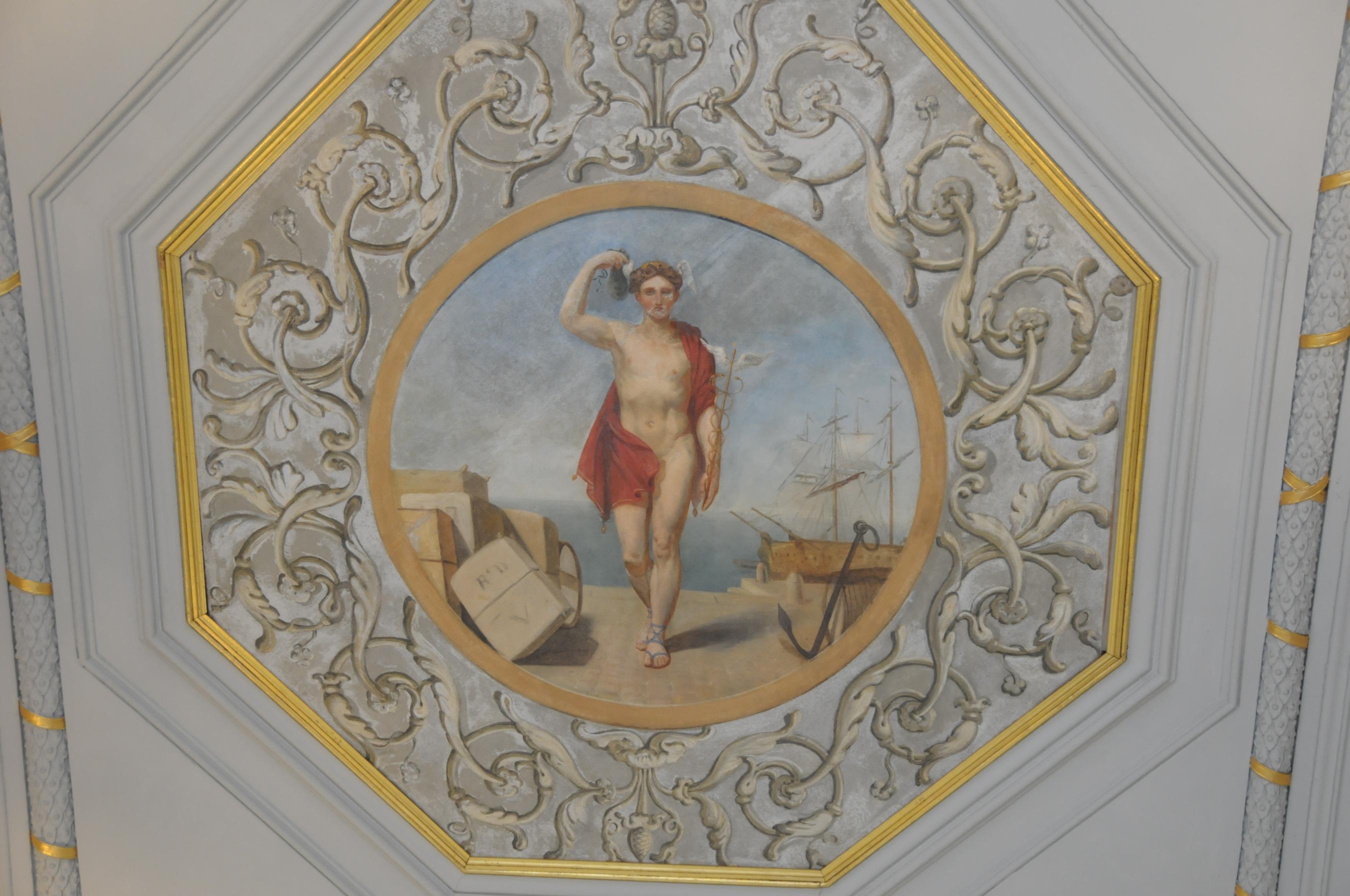
Ceiling with the God Hermes
The Galerie Véro-Dodat
Walk along rue Croix-des-Petits-Champs, and you will soon find yourself at the entrance of the Galerie Véro-Dodat, built as a financial investment in 1837 by the butcher Véro and the businessman Dodat. Considering its comfort and decor, it is indeed a gallery and not a passage. Both investors took advantage of the proximity to the Palais-Royal and Les Halles to create an elegant place, attracting the new bourgeoisie with luxury shops. The gallery housed a travel agency, the Messageries Lafitte et Gaillard, who offered their wealthy customers transportation by carriage to reach the French provinces. The painted ceilings of the gallery represent Hermes, the messenger of the gods and protector of travelers and traders. The Empire style of these paintings recalls the revival of a taste for Roman mythology, perhaps through the discovery of Pompeii (1763) and excavations at Herculaneum in 1828.
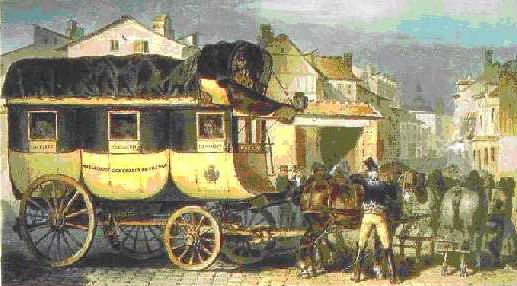
George Dubosc,
Carriage of the Messageries Lafitte et Gaillard
oil on canvas, 1894
While awaiting a carriage, one could stroll, shop in one of the sumptuous stores, have a coffee or dine in one of these luxury places decorated in mahogany and brass. All the wooden columns separating the shops had capitals with the caduceus of Hermes, a staff entwined by two serpents surmounted by two wings signifying agreement. The staff itself is the symbol of commerce, and top of the whole are cornucopias, symbols of abundance. The galleries are both the fruit of industrialization with the use of new building materials such as iron and glass and a demonstration of new consumption patterns. Wander aimlessly and randomly among shops that are grouped under one roof. The gallery becomes a "passage" from one neighborhood to another. In the absence of street pavements, galleries and passages also allowed passersby to avoid walking on muddy footpaths on rainy days, or to avoid the threat that haunted Baudelaire: to be hit by a carriage.
